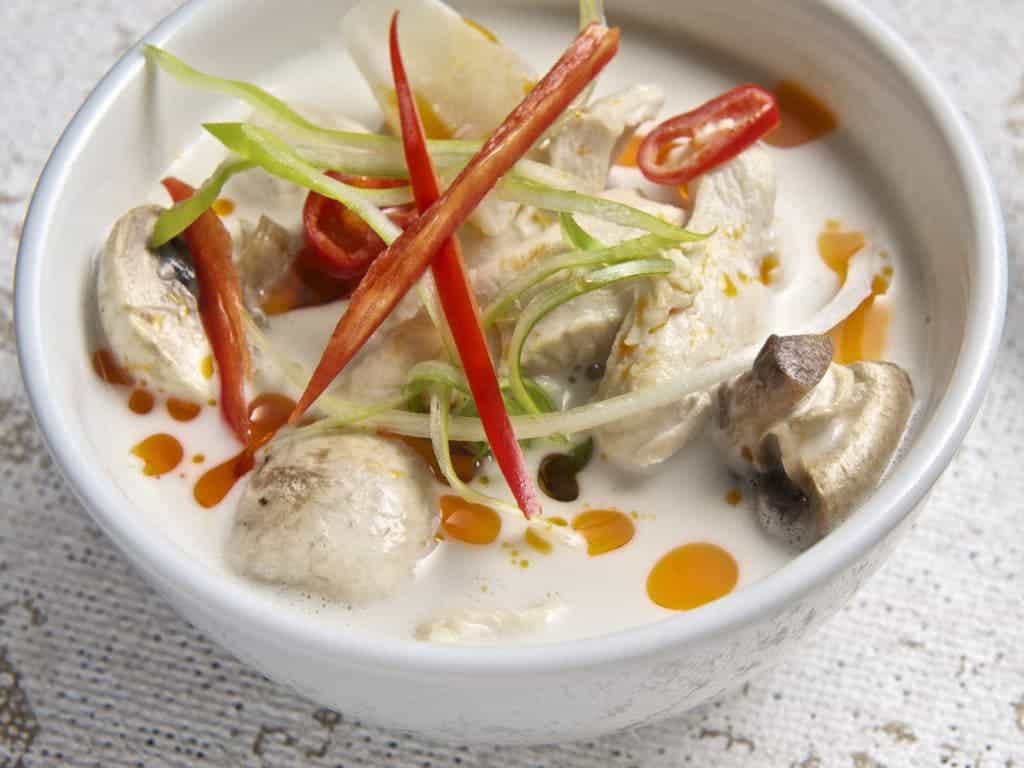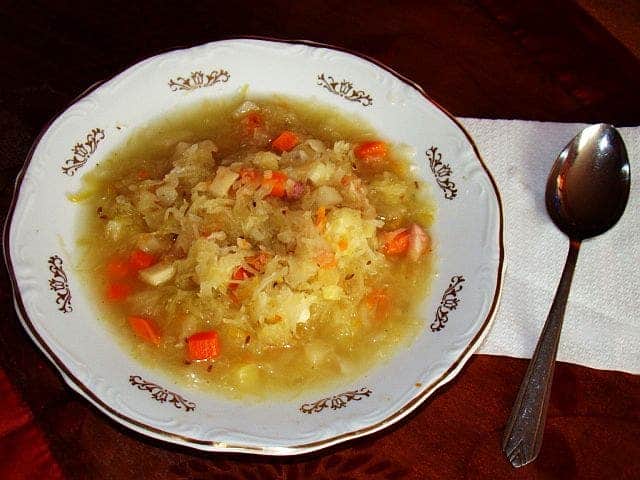
Healing soup
Malaria poses a massive threat to half of the world’s population, particularly in some areas of Africa and south-east Asia. Although treatments exist, the disease continues to kill over 500,000 people yearly, infecting a whopping 200 million. To make matters even worse, the pathogens are starting to develop resistance to most therapies — which makes finding new potential treatments more important than ever.
A team of researchers from London thought they’d seek potential treatment avenues from natural ingredients — specifically, ingredients in soups.
They asked the pupils at Children of Eden Primary School in London to bring in samples of home-made soup broths. The researchers specifically asked for recipes which had been passed down through the generations for the treatment of fever.
With London being the diverse city it is, the children also came from diverse ethnic backgrounds, from across Europe, North Africa, and the Middle East. They brought in 60 soups for the researchers (although only 56 could be tested; 4 had too much oil or were too thick for filtering).
The idea didn’t come out of thin air — interest for traditional foods that might have antimalarial properties surged after the discovery of Artemisins as a treatment. Artemisins are a group of antimalarial drugs extracted from a plant used in traditional Chinese medicine called Artemisia annua — also called Qinghao or sweet wormwood. For the discovery and synthesis of this substance, researcher Tu Youyou was awarded the Nobel Prize in Physiology or Medicine. Artemisins are the only antimalarial drugs to which pathogens have not commonly developed resistance, although they are not generally used alone, but in combination with other drugs (which greatly improves their efficiency).
Numerous cultures prescribe a hot broth for treating fever, each ascribing miraculous powers to their soups. For instance, Jewish grandmothers would always recommend a rich chicken soup, while the Japanese would swear by miso soup. In Eastern Europe, beet soup is often seen as an important winter treatment, and several different cultures support garlic soup as a cure. There is no shortage of such claims, but is there any truth to them?
To test this hypothesis, researchers asked children and their families to bring in small containers of soup for processing, as well as a larger portion for tasting — leading to the memorable description of the methodology: “15 mL plastic tubes for processing (after a healthy consumption/taste test; data not shown).” The researchers also acknowledge Children of Eden Primary School as the study’s first author.
The soups were frozen on arrival, and then thawed, centrifuged, and filter sterilized. In the lab, researchers also cultured a strain of Plasmodium falciparum — the most dangerous malarial pathogen. Filtered soup extracts were tested for their ability to inhibit parasite replication and for their ability to block parasite transmission through the mosquito. The results were intriguing.
In total, 5 soups inhibited parasite activity in more than 50% of the cases. In two of these, the inhibitory activity was comparable with that of a leading antimalarial drug, dihydroartemisinin. Four other soups proved capable of preventing the pathogen from reaching sexual maturity and spreading.
Education and Science

A few takeaways should be noted. First of all, no active or common ingredient in the soups was identified. In other words, researchers aren’t sure what’s working against the pathogens — it is probably a number of different ingredients, which will have to be identified. Secondly, just because it stops malaria in vitro doesn’t necessarily mean that it can work as a drug — there’s a long way from stopping something in vitro to stopping it in a human body. However, artemisins extracted from plants are also not as effective in their natural form. If there are indeed ingredients that can fight malaria inside these broths, they could be synthesized in more effective forms. The utility of any broth found to have antimalarial activity will of course depend significantly on the identification of the active source ingredient(s).
“This journey, mirroring that of artemisinin from the Qinghao herb, may as yet reveal another source of potent anti-infective treatment,” the study reads.
Researchers also highlight the importance of involving children in the study, inspiring them scientifically at a young age. In this age dominated by anti-intellectualism and fake news, this is more important than ever.
“More importantly, however, the exercise demonstrates the power of simple classroom-based exercises in engaging children in the normally disparate disciplines of traditional medicine or remedies and laboratory or evidenced-based research. At a time when there is a resurgent voice against evidence-based medicine, such exercises have great importance for educating the next generation about how new drugs are discovered, how they might work and how untapped resources still exist in the fight against global diseases of significance,” Jacob Baum, one of the study authors, told ZME Science.
The children played a key role in the study. Not only did they bring the soup in, but they were also tasked with writing the recipe down — which, Baum explains, means that they can’t exactly be sure what the soups contain. But they were really happy to get involved in the scientific process, as were the parents and school staff.
“The kids loved spinning and filtering soups – we have to get more kids in the lab! And the parents and staff were very happy to see kid’s being part of the learning, discovery process.”
Success — but early days
The project was more successful than researchers planned, Baum himself says. It started out as an educational foray into the idea of teaching kids the difference between herbal remedies/alternative therapies and what is called medicine.
“How does a herbal remedy become a medicine? The answer? Evidence! That’s what we learn from Artemisinin’s discovery – it’s a 3,000-year-old herb that became a medicine, after it was tested, extracted and then synthetically produced. Could we do the same with home made soup’s that claim to make you well? That’s what we set out to test with the kids.”
Overall, this is still a preliminary study, but it’s an interesting approach which could be very important as more and more pathogens are becoming resistant to existing treatments.
It was also double-blind study: researchers didn’t know what soups they were testing until after the test, which adds more confidence to the results. After the unblinding, two active broths were found to be from siblings
from different classes, who had brought in the same vegetarian soup, lending even more confidence to the results. It also contradicts a long-held belief in many cultures, that medicinal soups need to contain meat. The vegetarian soup was cabbage-based, and overall, the vegetarian soups seem to perform just as well as the meaty ones. It’s not just chicken soup that makes you well, Baum emphasizes, and there may be many curing ingredients in traditional remedies.
“Hopefully what our study highlights in two things – that the dichotomy between herbal and “western” medicine need not be so large if we are talking about evidence (if it works, it’s medicine!) and that there may be many untapped traditional medicines out there that could help with disease (including malaria), we just have to go looking, find them and then rigorously test them and find the right ingredient. That’s only the beginning of drug discovery, but it’d be an exciting place to start,” Baum told me in an email.
Baum says he doesn’t want anyone believing that he has a recipe for soup that cures malaria. But who knows… someone out there might.
However, despite all the potential health benefits of soup, many kids still don’t want to finish their soups. The researchers humorously end the study thusly:
“One disappointment from the study was the lack of a reported upsurge in finishing of meals, suggesting further work may be needed in translation of discovery science into childhood meal consumption.”
The study has been published in Archives of Disease in Childhood.


